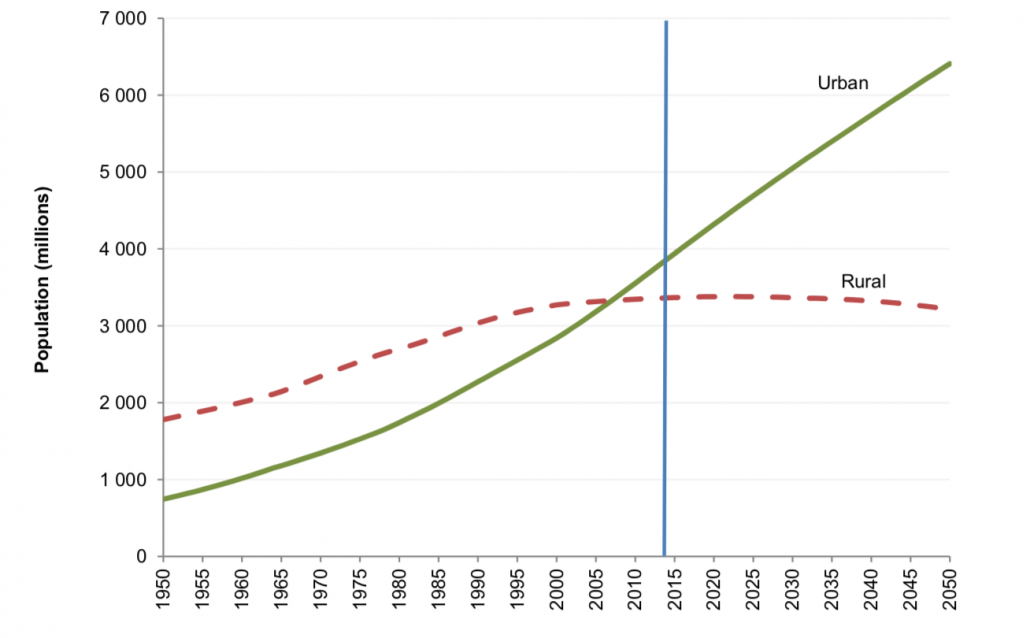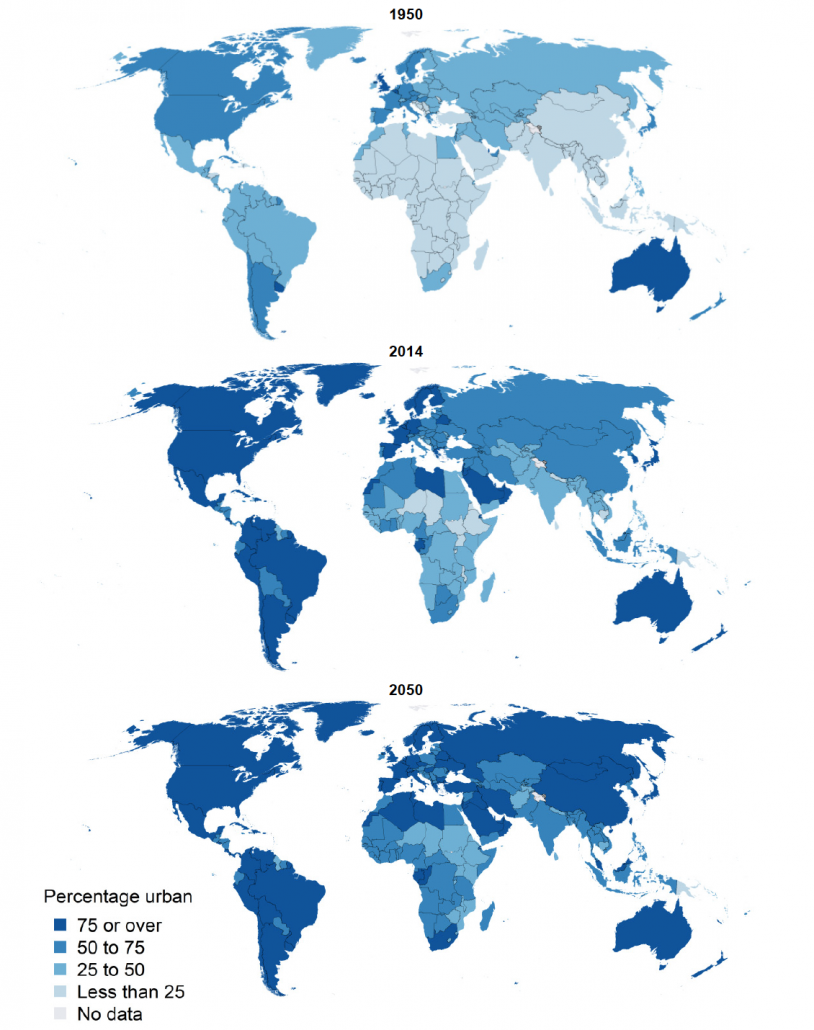What is urbanisation?
By 1804, the world’s population had grown from half a billion to one billion over 300 years. By 1999, it had surged from 3 billion to 6 billion in merely 39 years. It is anticipated that the global population will stabilise in the twenty-second century.
Urbanisation is the increase in the proportion of people living in towns and cities. The graph below shows a significant increase in urbanisation between 1950 and 2014, from 0.8 billion to 3.85 billion people.

The world’s urban and rural populations 1950-2050 – source UN
Urbanisation first occurred in high-income countries (HICs) during the Industrial Revolution. People were attracted to urban areas (pulled) from rural areas to work in factories. They were also pushed as developments in technology led to mechanisation on farms.
Nowadays, the rate of urbanisation in low-income countries (LICs) is greater than in HICs. As LICs develop, more people migrate to urban areas. The choropleth maps below clearly show how many LICs are becoming more urbanised.

Percentage of the population residing in urban areas, 1950, 2014 and 2050 – source: UN – https://esa.un.org/unpd/wup/Publications/Files/WUP2014-Report.pdf
Although urbanisation is greater in wealthier areas of the world compared to poor areas, rates of urban growth (changes between 1950 and 2000) are higher in poorer areas of the world. As you can see from the graph below, the rates of urbanisation in poorer parts of the world are very high. This is due to rural-urban migration. Current rates are projected to increase due to industrialisation and economic development in some poorer countries. Urban growth rates are lower in more developed countries because they have already taken place, hence the high levels (over 80%).
Use the images below to explore related GeoTopics.